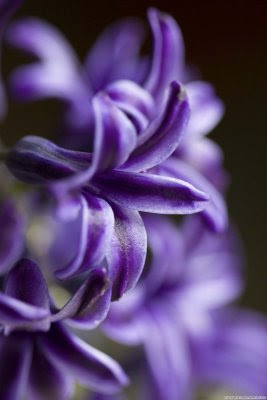Meaning of Quilts
Today, I have the honor of hosting a guest blogger, Linda Hubalek. Linda’s sixth grade teacher assigned her class the traditional “What I Want to be When I Grow Up”. Linda had an nontraditional answer…she didn’t want to be a nurse, a teacher, or a mom. She wanted to be a farmer! Linda’s sixth grade dream came true when she graduated from Kansas State University with a degree in Agriculture/Horticulture and spent years doing agronomy research and eventually starting her own business Prairie Flower Creations.
 Much like her own ancestors who headed West, Linda found herself in California tending a cement garden and longing for the fields of Kansas. Linda “visited” her beloved Kansas by writing the Trail of Thread series about Kansas pioneer women.
Much like her own ancestors who headed West, Linda found herself in California tending a cement garden and longing for the fields of Kansas. Linda “visited” her beloved Kansas by writing the Trail of Thread series about Kansas pioneer women.Although Linda is back in Kansas (growing bison this time, not prairie flowers), she’s still writing about Kansas women. Her FOURTH series, the Kansas Quilter series will be released late this year.
Welcome Linda as she give us a glimpse at "The Meaning Behind Quilts." Don't forget to add a comment for the Ebook Giveaway (Kindle copy of the ebook: Trail of Thread).
By definition, a quilt is a coverlet or blanket made of two layers of fabric with a layer of cotton, wool, feathers, or down in between, all stitched firmly together, usually in a decorative crisscross design. The top layer may be a single piece of fabric, or it may be a made from a variety of scraps of material that were pieced together to form blocks, that are then sewn together to make the top layer.
When one thinks of pieced quilts, pioneer women automatically come to mind. This group of women often had to move, start new households, and work with what they had on hand. Their quilts would have been used daily, made and patched to last through the rigors of pioneer life.
For example, Deborah and John Pieratt, featured in the first book of my Trail of Thread series, left Kentucky in 1854 when the Territory of Kansas was formed. They were part of the thousands of families that packed wagons and headed east for the promise of a new life. Quilts would have been used for bedding—in the wagon or on the ground, as a hanging shelter, or as a partition for privacy. They were also used for burial of loved ones along the trail.
Thimble of Soil, the second book in the series, features Margaret Ralston Kennedy. She was a widow who moved with eight of her thirteen children from Ohio to the Territory Kansas in 1855. She was dedicated to the cause of the North, and helped with the Underground Railroad in both Ohio and Kansas. It is possible that some of the quilts she made had special blocks giving direction to runaway slaves.
Orphaned Maggie Kennedy, portrayed in Stitch of Courage, the last book in the series, followed her brothers to Kansas looking for a better life as the states fought out the history of the Civil War. Women made and gave quilts for the soldiers to use during their journeys and battles.
What was the meaning for all these quilts? They were all just fabric to provide warmth and protection, but they also connected the hearts and souls of the past, present, and future.
The young woman on the trail packed quilts to use, but also to bring memories of her family left behind to her new frontier home.
The older woman—who stitched directions in her quilt that hung outside to air— gave freedom to people trying to escape a bad life.
The soldier wrapped in a dirty quilt, trying to keep warm and get a bit of sleep, was given the security of knowing that someone from home was thinking of him and waiting for his return.
Think of the countless hours of work and devotion it took to create these pioneer quilts. These finished masterpieces of the fingers gave a sense of accomplishment to the makers, and comfort and connection to the users.
Do you have a special quilt passed down through your family? What does it mean to you?
About the Linda Hubalek and the Trail of Thread series:
Follow Linda on Twitter (https://twitter.com/#!/LindaHubalek)
Visit Linda’s Website (http://www.lindahubalek.com/)
Visit Linda on Facebook (https://www.facebook.com/lindahubalekbooks)
Contact Linda (linda@lindahubalek.com)





Comments
Margo
http://margodill.com/blog/
Quilts may keep us warm but it's the love that they are made with that makes them special!
Thanks for your thoughts and sharing about your daughter's quilt. May it warm her body and soul for many years.
Thanks for sharing! I took my mother-in-love to a wonderful exhibit down in Old Deerfield of quilts. One of the most amazing ones was made of squares that were only 1/2 inch in diameter. Incredible!
You may not be able to stitch a quilt, but you are able to stitch a story together, which is something many people can't do. We all have our own gifts and talents.
Thanks for your comments. Your children are blessed to have their own quilts, especially ones made by your Aunt. Very special, indeed!
Yes, quilts were hung on clothes lines by the women of the underground railroad to let slaves know when it was safe to move, what houses where safe, if someone has made it to freedom and other important bits of information. It is amazing that the bounty hunters never caught on. There is a great book on the various patterns,Hidden in Plain View: A Secret Story of Quilts and the Underground Railroad [Paperback]
Jacqueline L. Tobin (Author), Raymond G. Dobard (Author).
Thank You
CM
May her quilt be an everlasting link to the love you shared.
Blessings!